With pandemic restrictions easing in Europe, our thoughts turned to travel and a needed break from Berlin. After much consideration, we settled on our first destination: Freiburg in Breisgau. A town situated in Germany’s far Southwest corner, Freiburg is known for a few things. Due to its location, it boasts one of the sunniest and warmest climates in Germany. The town is also home to the University of Freiburg, an old and highly regarded institution. Lastly, and of particular interest to us, Freiburg is also considered a gateway to the Black Forest and is a short drive to France’s Alsace region, renown for its wine and well-preserved medieval villages.
Starting our journey
Next, was the question of how to get there. We originally considered a two week train journey, meandering through various cities and towns along the way (particularly: Leipzig, Bamburg, Würzburg, and others). After sketching this out, we figured it would make for a hectic and not particularly relaxing vacation. Instead, we settled on a short Berlin-to-Stuttgart flight, then a two hour drive to Freiburg.
As an aside, Freiburg technically has an airport, the EuroAirport Basel Mulhouse Freiburg, but flights were inconvenient or expensive. The airport is a curious entity, serving as the main airport for Germany’s Freiburg and Switzerland’s Basil, but is in neither country, being situated in France. For a time, the airport was divided in two, with one part under French jurisdiction and the other under Swiss. Now, Switzerland is in the Schengen zone, but, if you get a Swiss customs official, you still may get a Swiss stamp on your passport, despite arriving on French soil.
After the flight into Stuttgart, we started our drive south to Freiburg. Signs along the way tempt you to stop at this castle or that palace. Feeling hungry (and rather curious), we decided to visit Schloss Haigerloch, an 800 year-old former fortress. Restored in the 1970s, it is now a beautiful hotel and excellent restaurant. Nearby, in an interesting bit of trivia, is the Atomkeller Museum, where Nazi scientists worked to develop nuclear fission. Now well-fed, we turned west, driving on narrow roads through the low ancient mountains of the German southwest.
Exploring Freiburg im Breisgau
Freiburg is often called “Germany’s greenest city”. While this typically refers to its status as an eco-living leader — with abundant solar power, electric buses, extensive bike lanes, vegan ice cream shops, and so on — the town is also very green, as in the color. To the east, the tree-covered hillsides of the Black Forest Nature Park provide a backdrop for a town dotted with public and private gardens and tree-lined streets.
Snaking through the town are shallow, water-filled channels. Added sometime around the 12th century, they provided water to the city and were used to fight fires. Now, they are one of the town’s most distinctive features. You’ll often see children sailing little wooden boats down the miniature canals. Local superstition states that, if you accidentally step in one of many channels, you’ll soon marry a local.
Freiburger Münster, the town’s central cathedral, towers over the skyline. Constructed around 1200, it was one of the few downtown survivors from heavy Allied bombing in WWII. It also provides a striking stage for the expansive daily market that fills the square around its base. Unlike many markets in picturesque small towns, this one is for locals first, and boasts a wide selection of local fruits and vegetables. Around the square, rebuilt and restored buildings give the town center a medieval feel, even if some buildings are a decades rather than centuries old.
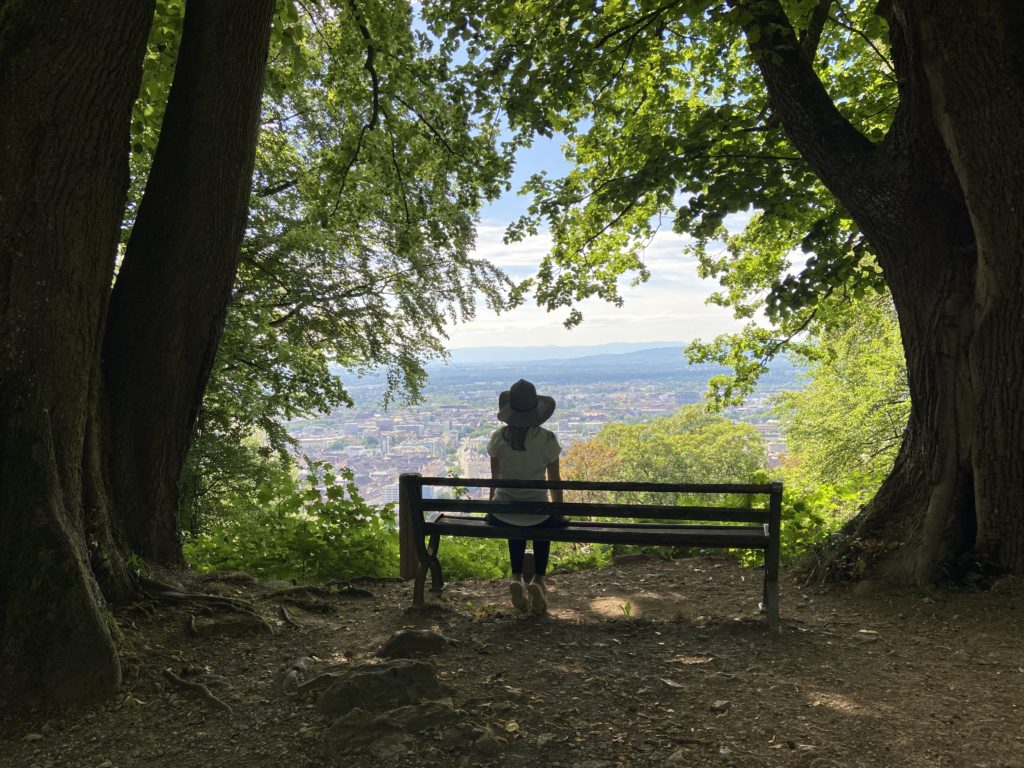
Taken together, all this makes Freiburg quite a lovely and livable city. We spent our first couple days just exploring these sights and sampling the excellent local food. A few personal favorites included coffee and cake at Dattler which overlooks Freiburg, the botanical gardens, and regular stops for ice cream from Die Eismanufaktur.
Hiking Feldburg Mountain
The beautiful weather and distant mountains encouraged us to get outside the city a bit. So, on a cool Sunday morning, we set off for Feldburg, the tallest mountain in Germany outside the Alps. In the winter, it is a popular ski resort, but in the summer the slopes are free of snow and open to hikers. Clouds had rolled in that morning, and we spent the first hour of our hike on in a bright windswept haze, relentlessly trudging our way up. As we reached the top, the sun burned through the clouds, opening stunning views across the mountains and surrounding Black Forest.
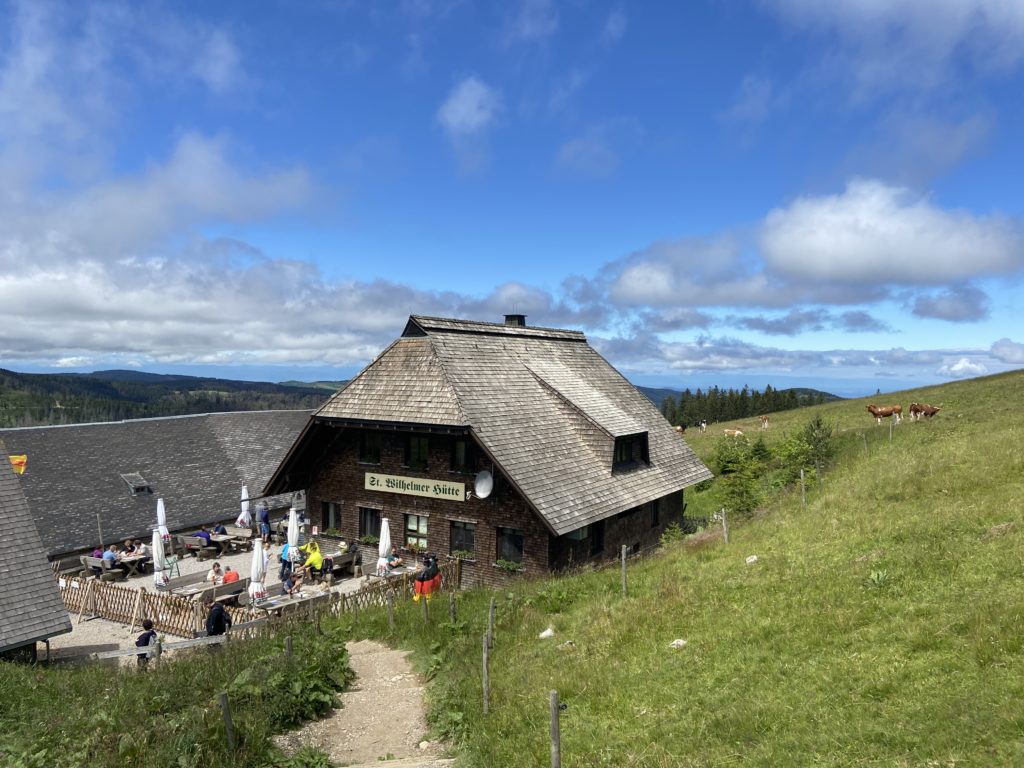
The wind continued unabated, so we quickly ate our snacks and debated which route to take back to the car park. We’d noticed a number of signs for mountain huts on our way up, so we elected to find the closest one on our way down. With dreams of cake and beer, we started off. On the way, we passed a herd of cows, calmly grazing on a sharp slope more than 1000 meters up. As we rounded a bend, the mountain hut, more a small restaurant, came into view. And we were not disappointed. Soon, we were drinking cold beer and eating a hearty warm potato soup, all while gazing at alpine views from the comfort of St. Wilhemer Hütte. My first love will always be hiking to alpine lakes in the Pacific Northwest, but capping a hike with a cold beer in a warm mountain hut isn’t far behind.
Off to Colmar
While I’d heard of Alsace, it never formed more vague images of wineries and old villages. When I started planning our journey, I learned more about the area’s unique character, having been traded (often through conflict) between France and various German states for nearly three centuries.
If you do a web search for Alsace, you’ll see dozens of charmingly colorful, timber-framed buildings, bordered by flowers, and often situated on small canals. Many of these are of Colmar, a stunningly beautiful town at the edge of the Vosges, a range of low mountains in Eastern France. And the town does not disappoint. The most picturesque canals form an area called Petit Venice, which is just as beautiful (if not more-so) than its larger cousin in Italy. Strolling through the winding streets is a real joy.
Then, of course, there’s the food and wine. Called the “Capital of Alsatian wine”, Colmar is home to dozens of wine-tasting rooms and excellent restaurants. A visit to the area is worth it for the food alone, but when coupled with its charming scenery, it makes the town something quite unique.
Alsace
What makes the Alsace truly special though is not just Colmar, but the many smaller villages which dot the rolling hills. In the race for “France’s most beautiful village” (which is literally a competition, called “Les Plus Beaux Villages de France“), the rivalry is tough, but several recent honors have gone to villages in Alsace. With a car, they are all easily accessible from Colmar, with some of the most beautiful a mere half hour away. Here are a few standouts we visited:
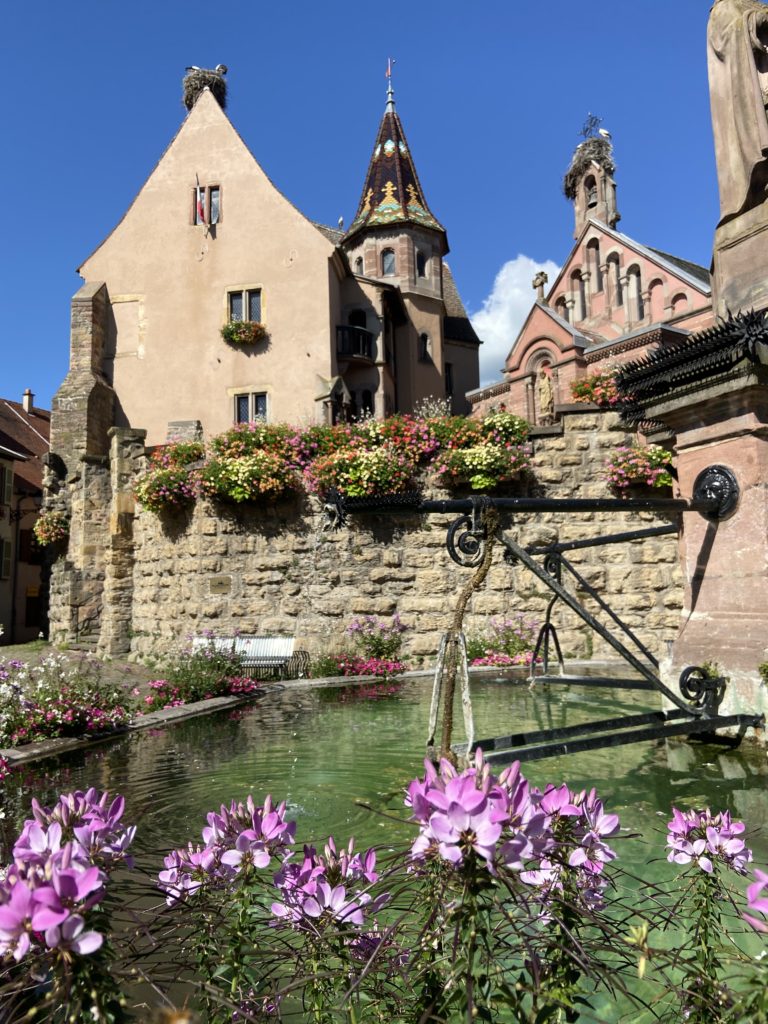
Eguisheim
This 2013 “most beautiful” winner is located just south of Colmar. A tight ring road surrounds a warren of narrow, winding streets, with the Château Saint-Léon and an exquisite small chapel in the middle. High overhead, storks silently glide over the village. As one of the symbols of Alsace, they’ve been given prime real estate, with numerous perches built on church spires and building tops. We arrived early in the morning, and had much of the town nearly to ourselves and the locals for the first few hours. I’ll long remember sitting in the quaint center of town eating one of the finest croissants I’ve ever tasted.
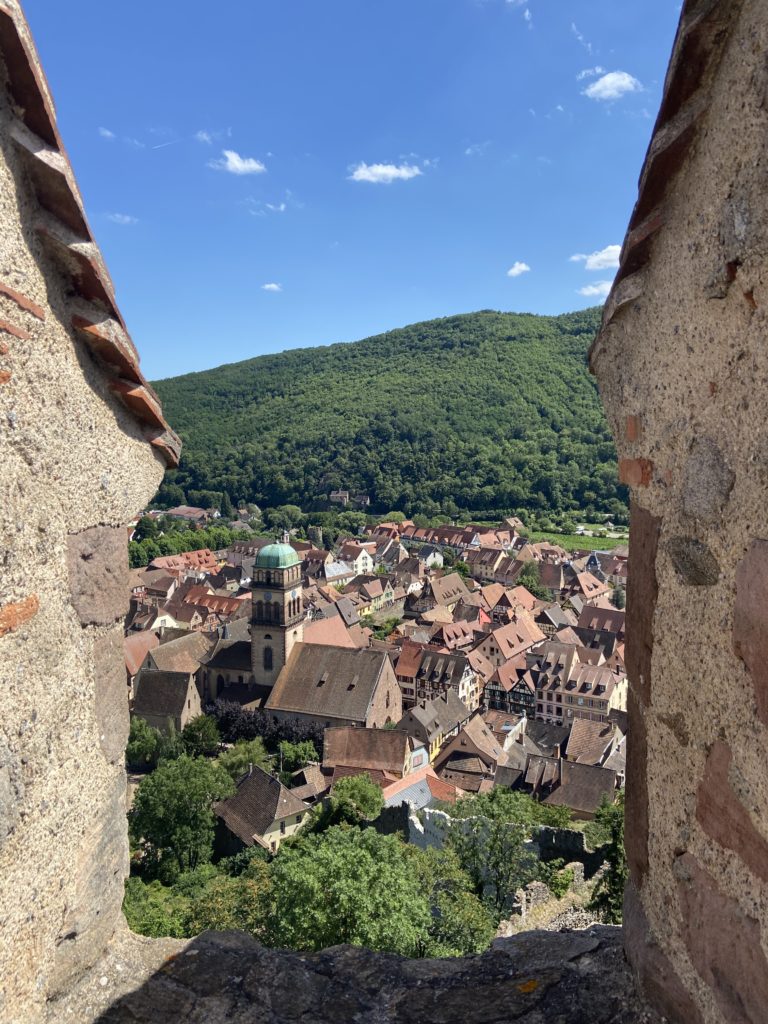
Keysersberg
Nestled on the slopes of the Vosges mountains, Keysersberg (another award winner), was originally a fortress. Although nearly as beautiful as Eguisheim, Keysersberg’s other draw is the 800-year old Château du Schlossberg. A short walk up from the center of town, the castle offers panoramic views of the village just below and the surrounding vineyards beyond.
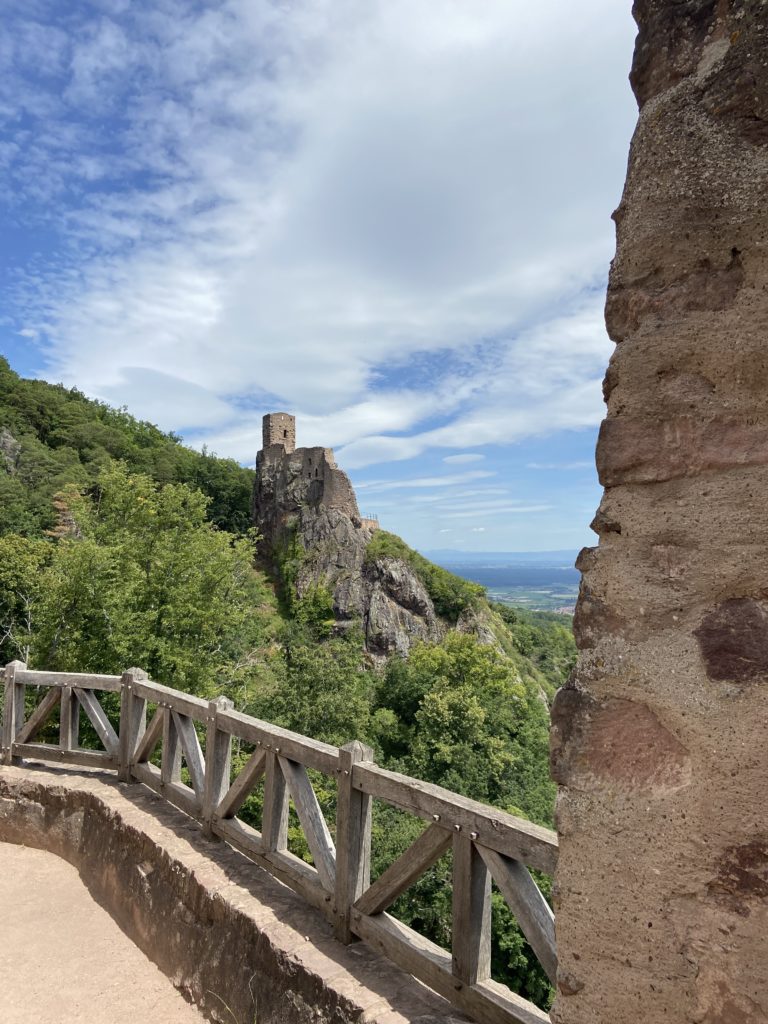
Ribeauvillé
Just north of Keysersberg is Ribeauvillé. When we arrived, there were more tourists, and cars cut through the middle of town, which breaks the majestic spell a bit. Nonetheless, the little circle in the middle of town is a gem, and well worth a visit.
The real draw for us was the Trois Châteaux (Three Castles), a hiking trail that leads up to, you guessed it, the ruins of three 13th-century castles. The hike was a proper one, with a decent grade and, on a hot day, requires some modest effort. As you hike up, the Rhine river valley spreads below, and ancient ruins loom above. It all feels snatched out of story book. On arriving at the castle, you can explore the various ruins and climb to the of the main tower, which offers one of the best views in all Alsace.
Strasbourg
Our last stop was Strasbourg, the capital and largest city of the Grand Est region of France. After the idyllic little villages, I expected the return to a “big noisy city” would be a bit of a let down. Instead, we were quite surprised with Strasbourg. While certainly a lot larger, it is not overwhelmingly so. And it is quite beautiful too.
We stayed in Strasbourg’s historic city centre, the Grande Île, an island with the region’s typical timber-framed buildings, narrow streets, and capped with the city’s cathedral. And what a cathedral. Goethe referred to it as a “sublimely towering, wide-spreading tree of God”. Standing at the cathedral’s base, in the broad, open square, it is easy to share his same awe. From the observation deck, 330 steps up a narrow spiral staircase, you see all of Strasbourg below and the Vosges mountains in the distance. Beyond its height, the amount and quality of Gothic detail is staggering. The monumental stature is continued inside, which is beautiful in its surprising elegance.
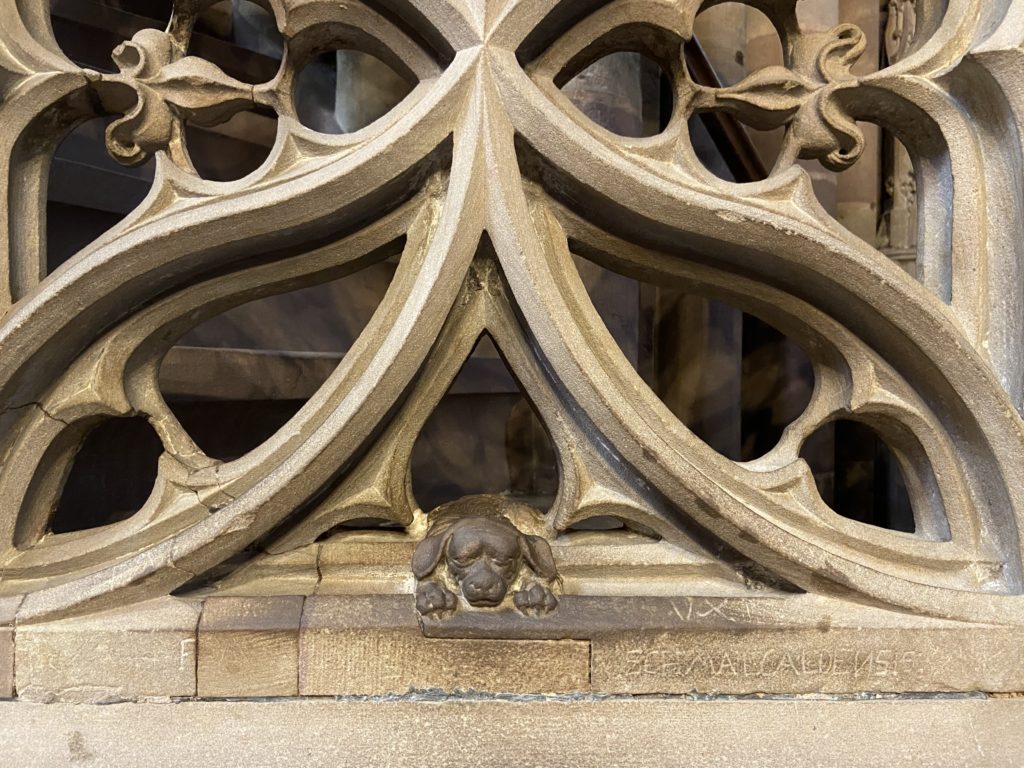
The pup of Strasbourg Cathedral
There are little, wonderfully human-scale details in the cathedral as well. In the 15th century, one of the great popular preachers, Johann Geiler von Kaisersberg, would come to preach at the cathedral. Legend has it, that during his long, earnest sermons, his loyal dog would lay down and fall asleep next to him. When a pulpit was built to honor Strasbourg’s favorite preacher, the artists carved a small dog, which, to this day, remains in repose, sleeping beside his former master.
Of course, there’s much more to do in Strasbourg than traipse through the cathedral. One favorite of ours was walking along the banks of the River Il, which guides you around the city and offers lovely views. It is also a prime picnic spot, and many of the city’s residences park themselves there with a bottle of wine and cigarette on a hot summer afternoon.
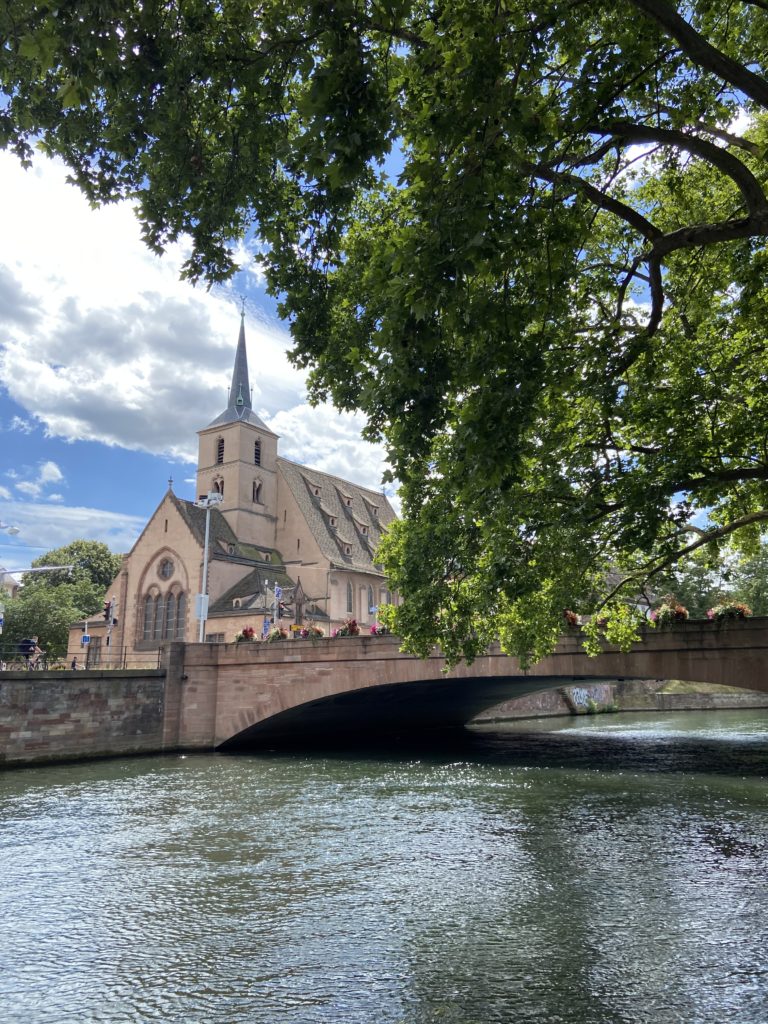
Another highlight was walking along Rue des Juifs. Formerly the center of the city’s Jewish quarter (hence the name, “Street of the Jews”), it is now lined with chic boutiques and modern restaurants. A particular gem was the restaurant Les Chauvins. Here, they offer modern takes on traditional Alsatian cuisine. Nearly everything they serve is, quite proudly, from Alsace. One of the few exceptions is a part of the wine list, which is from Chile, but notably produced by a family from Alsace. We ended up having a wonderful chat with the chef, who rightly takes pride in sharing the best of Alsace.
Our last stop in Strasbourg was Petit France, a historic quarter of half-timbered houses and cascading canals. While it was beautiful, it was quite busy, and we were getting into the first hot days of the summer. The stifling heat quickly drove us back to our air-conditioned apartment, so I’d hesitate to say we were able to enjoy ourselves. Ultimately, our two days in Strasbourg probably weren’t enough and I hope to visit again.
Want to follow along with our Berlin adventure? Subscribe!
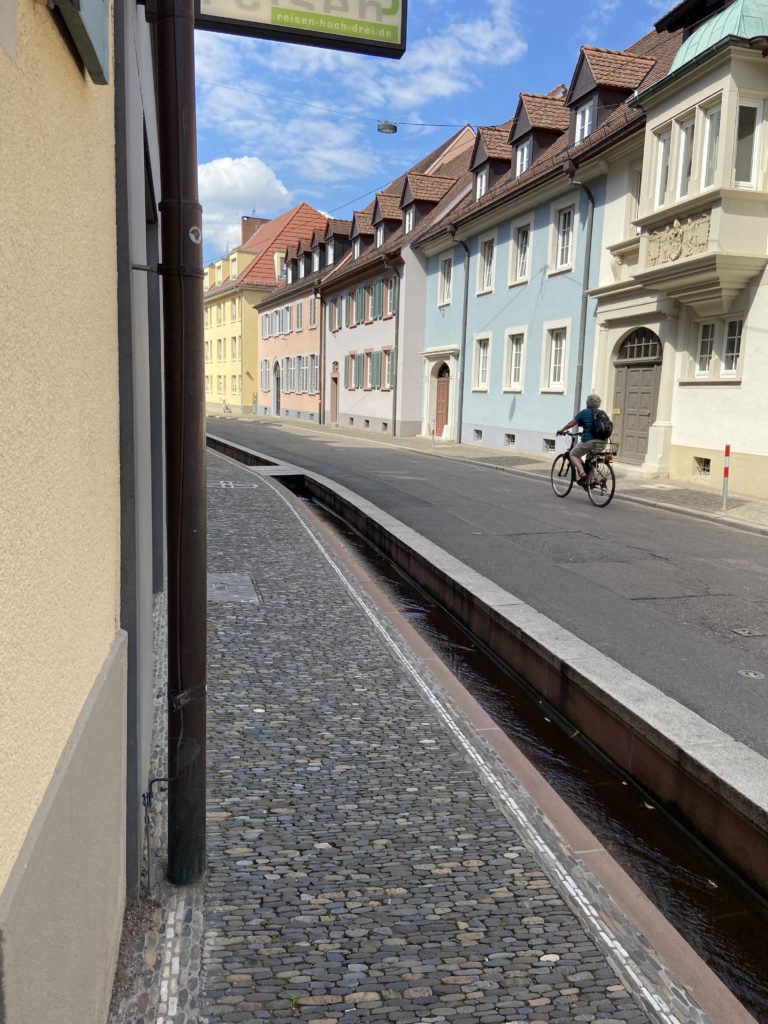
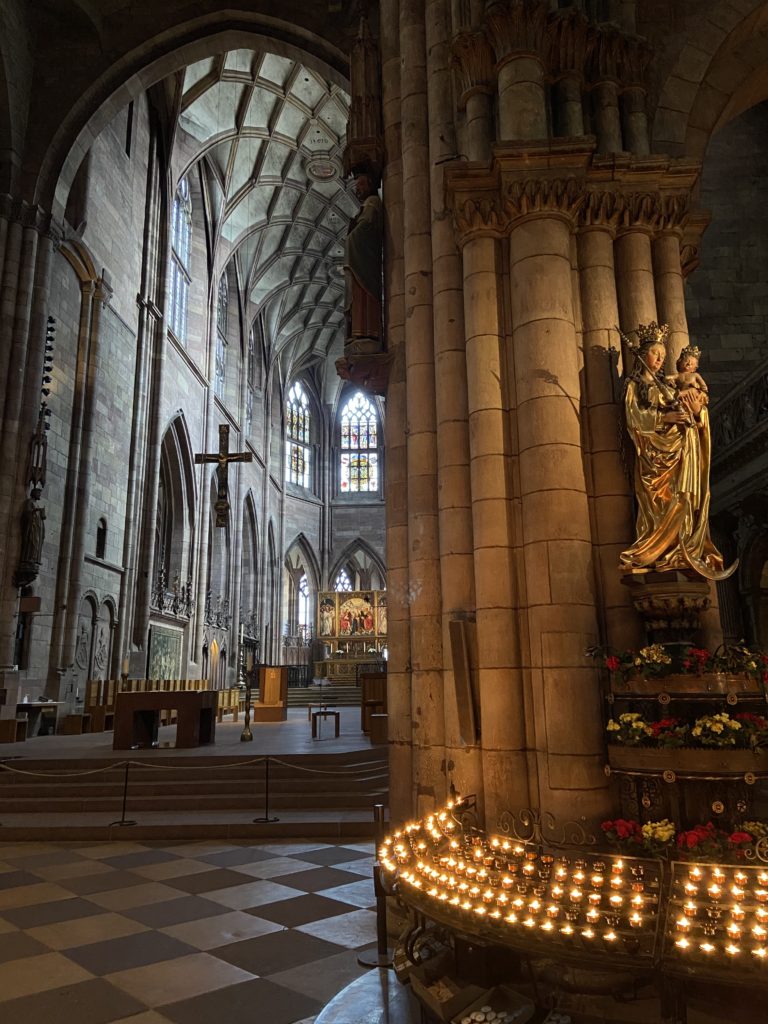
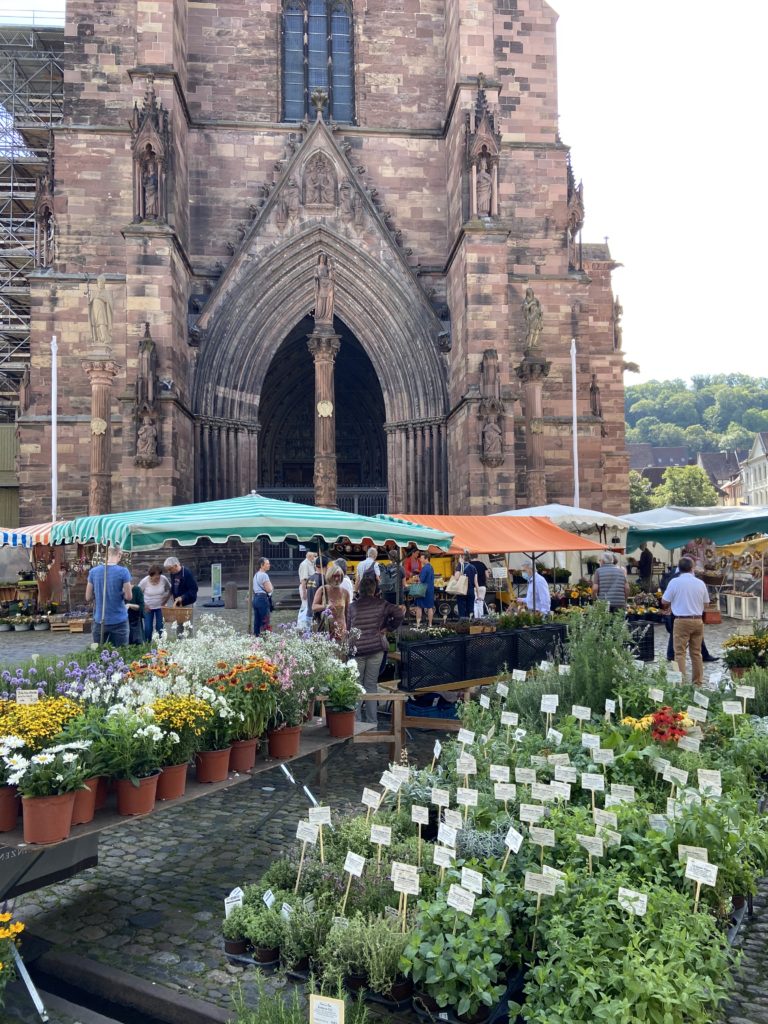
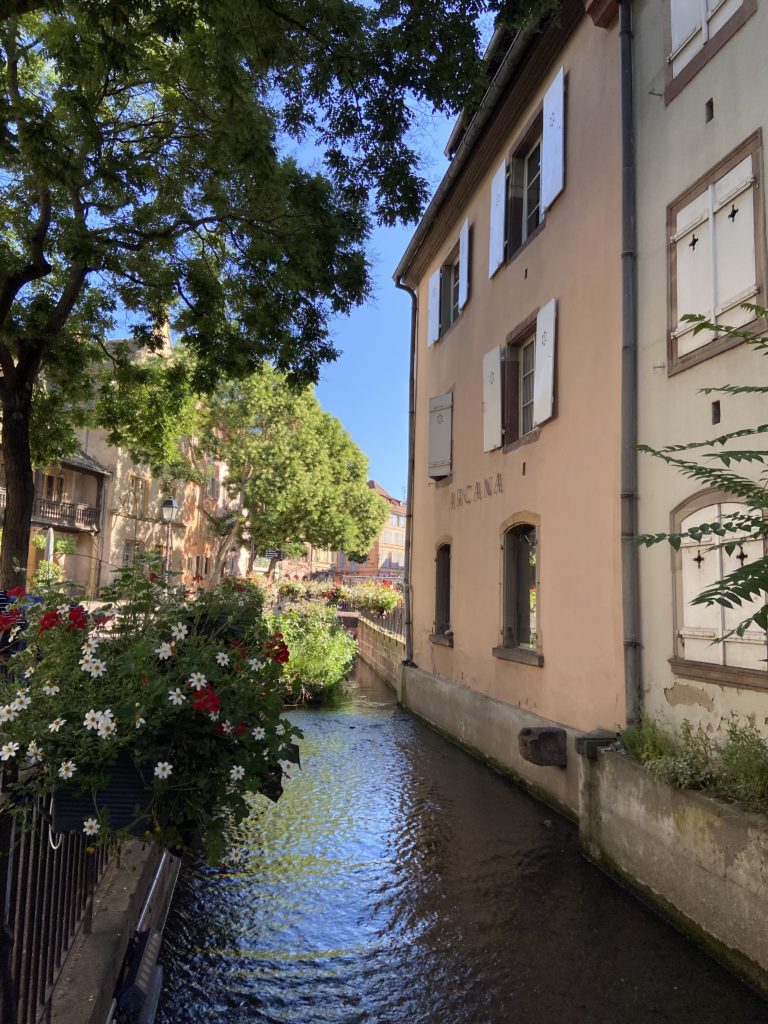
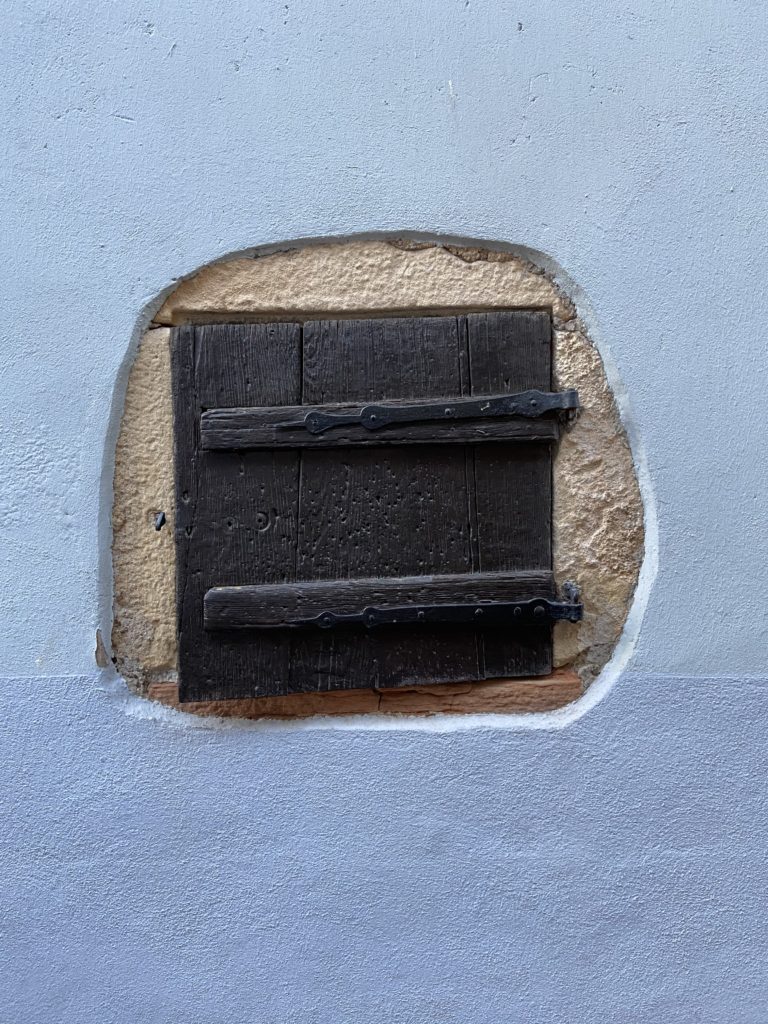
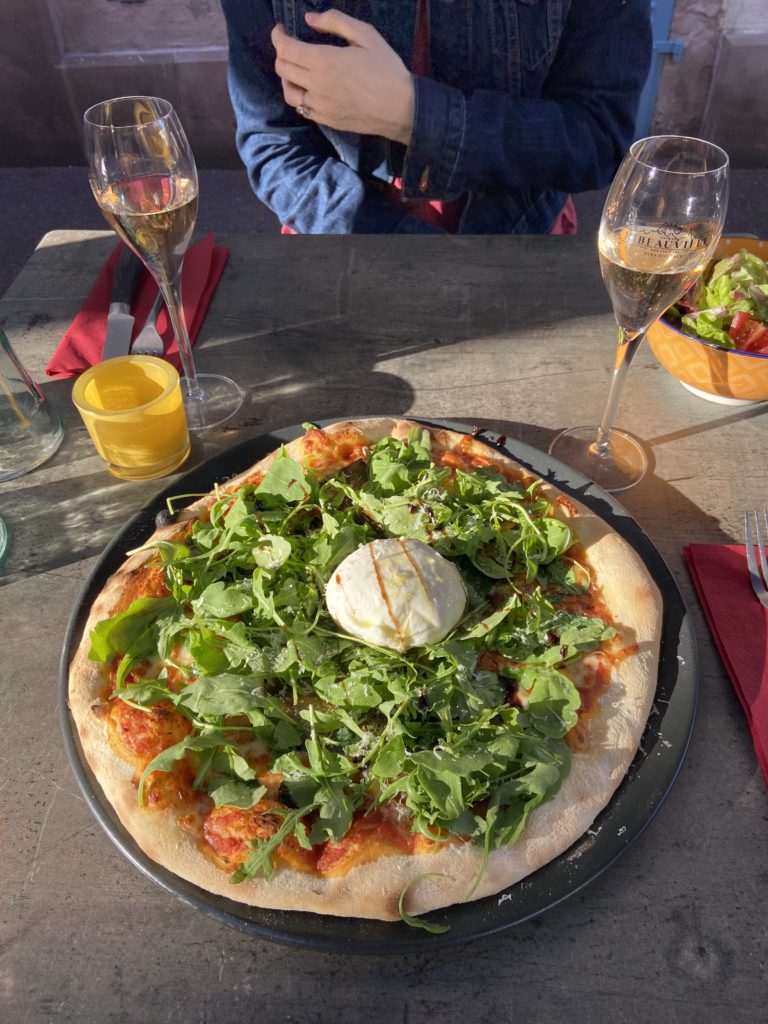
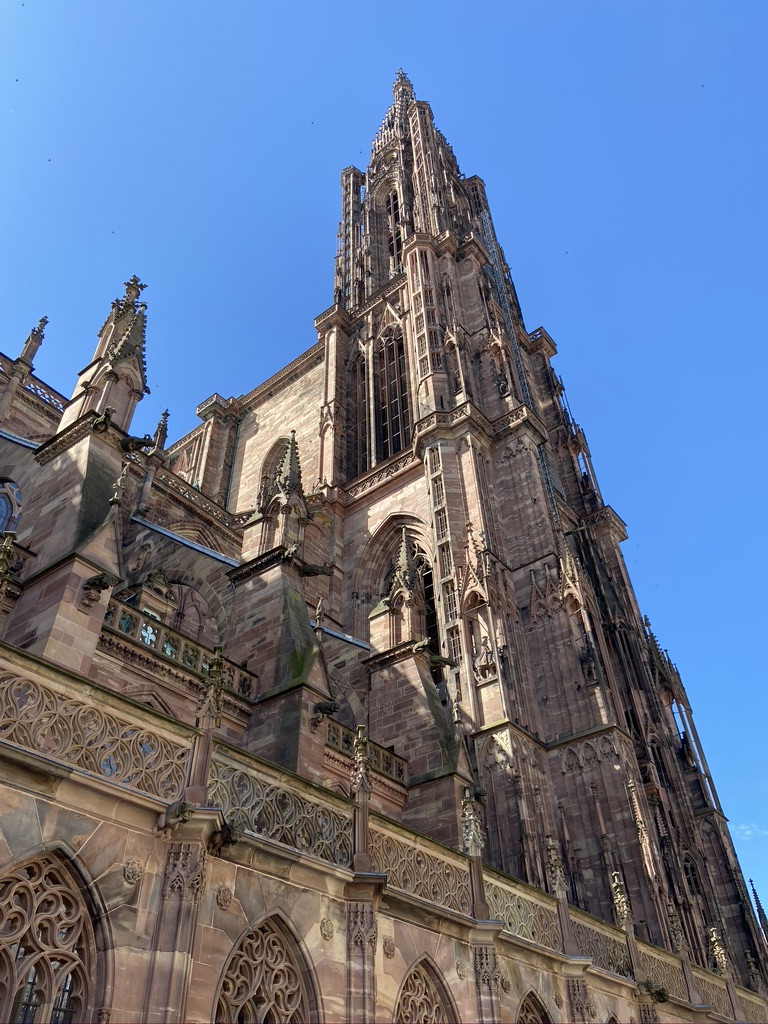
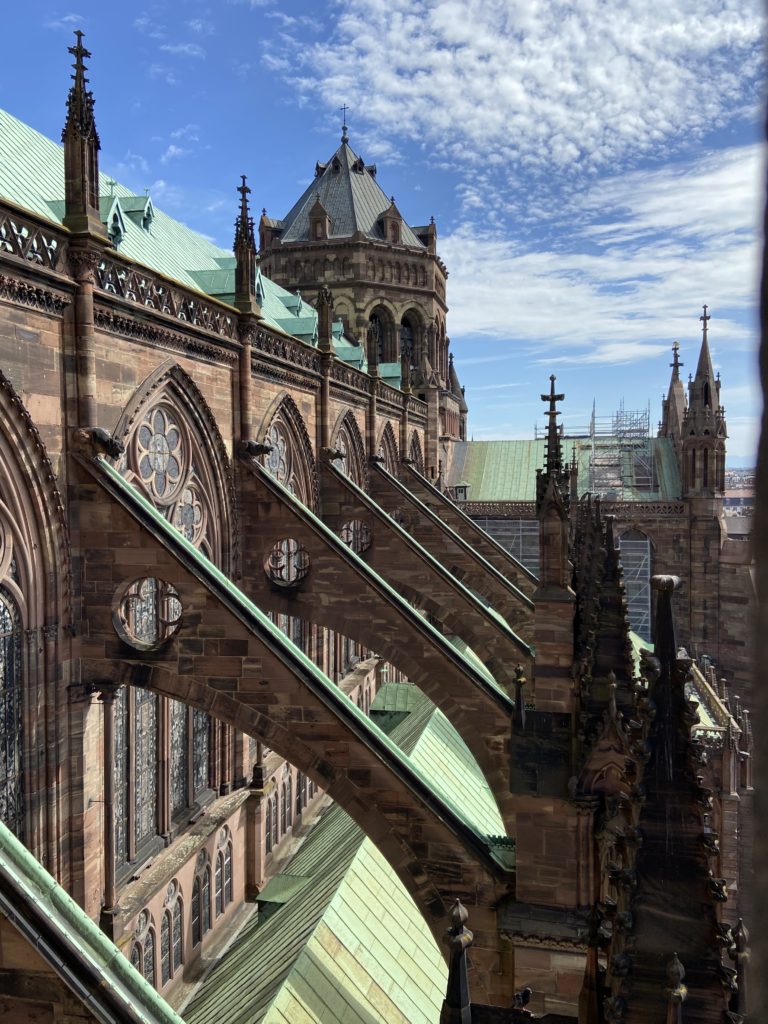
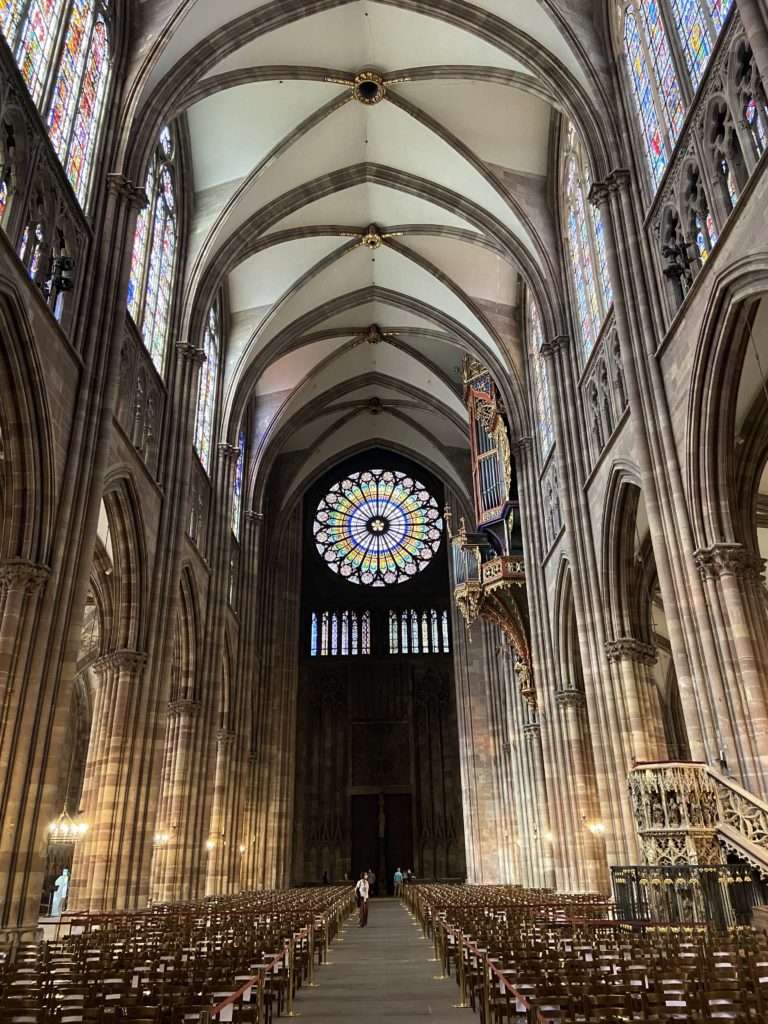
Fantastic pics Darren, can hardly wait to visit some of these beautiful places!
Thanks! We’d love to join you and head back!
Darren, I thoroughly enjoyed this…you write beautifully! After speaking with Dani, it was fun to go back and see more pictures and descriptions of where you two had been travelling. What exquisite villages and towns you saw filled with their beautiful flowers and incredible castles. I’m amazed they could build those churches and castles like they did centuries ago. Can’t wait to some day see it all as well.
Happy to share! Hopefully in the next year or so things will get easier and you can take your trip you planned!
Wow!!! SOOOOOOOO jealous! Those pictures are AMAZING! My favorite of course, is of Daniela on the bench. Miss you guys so much!!
Thank you and miss you too! Hope you can come visit at some point.